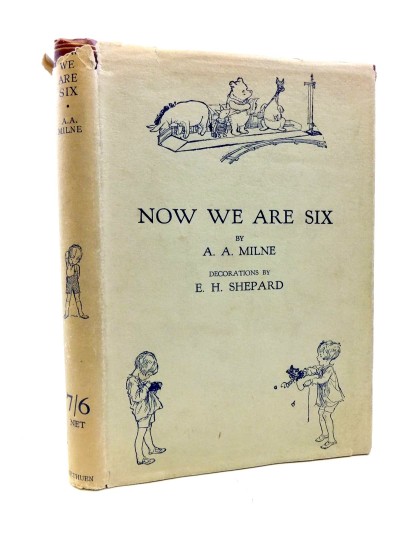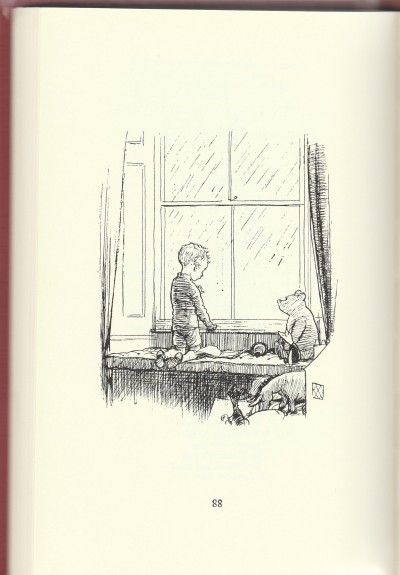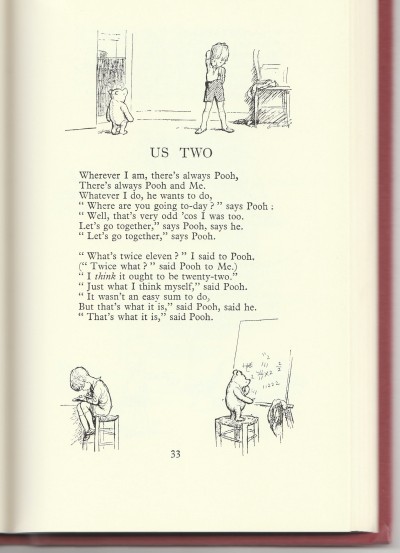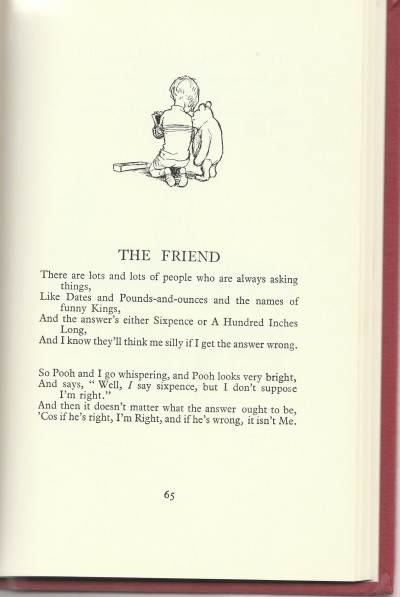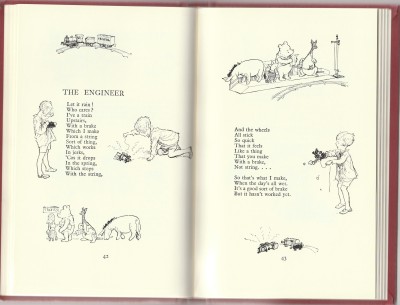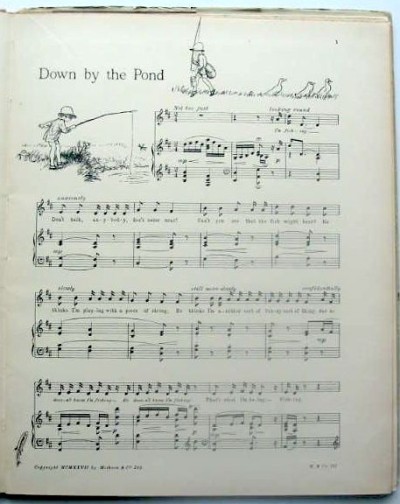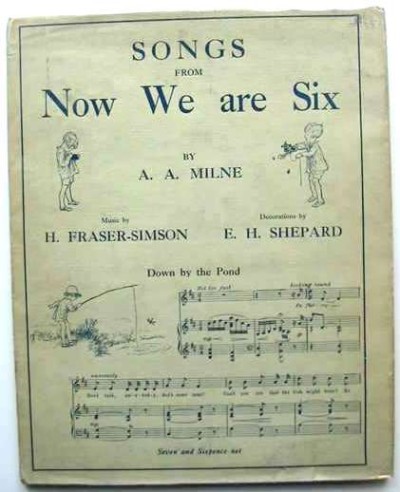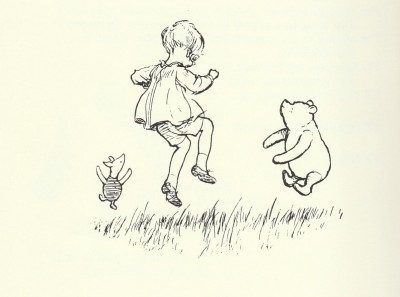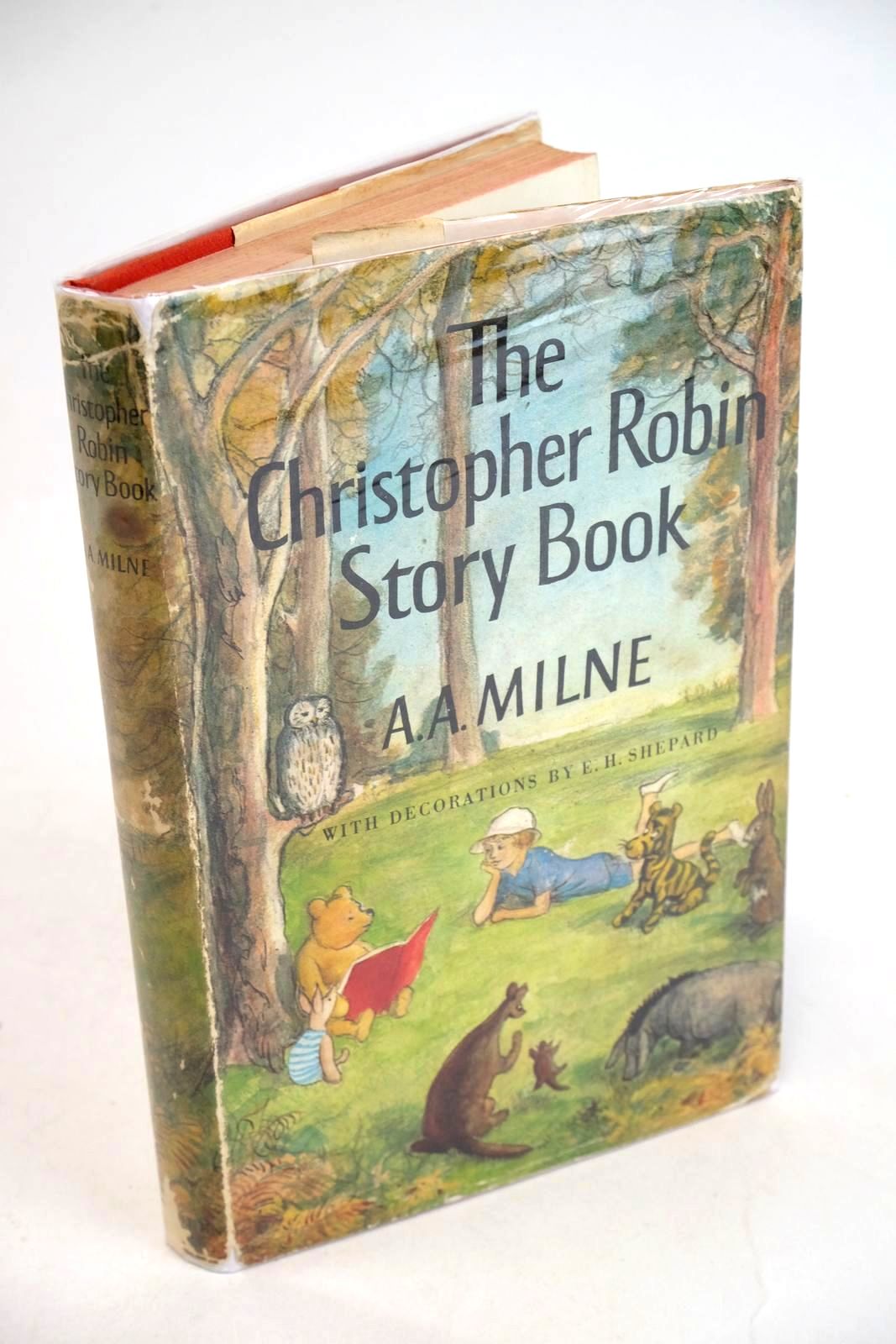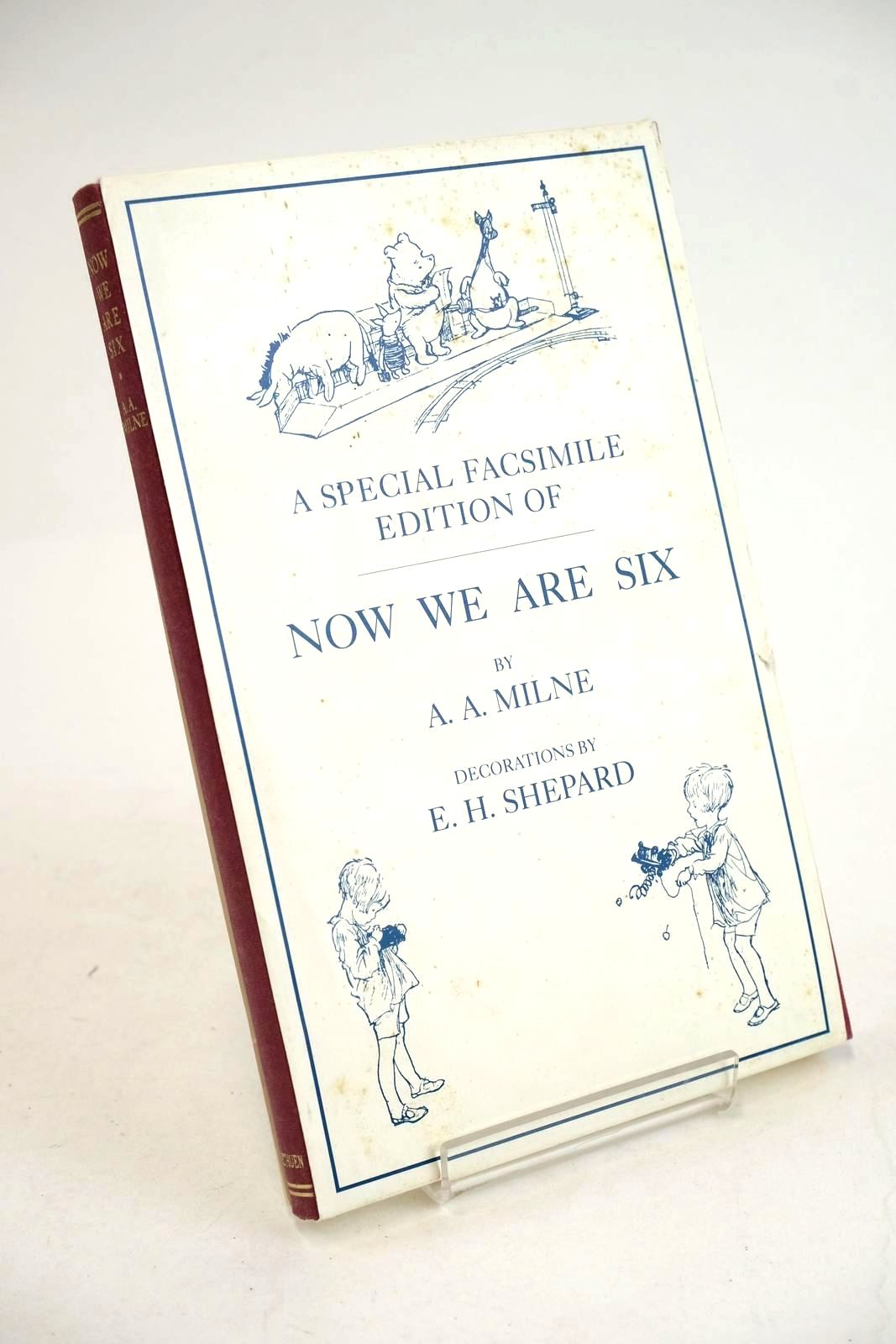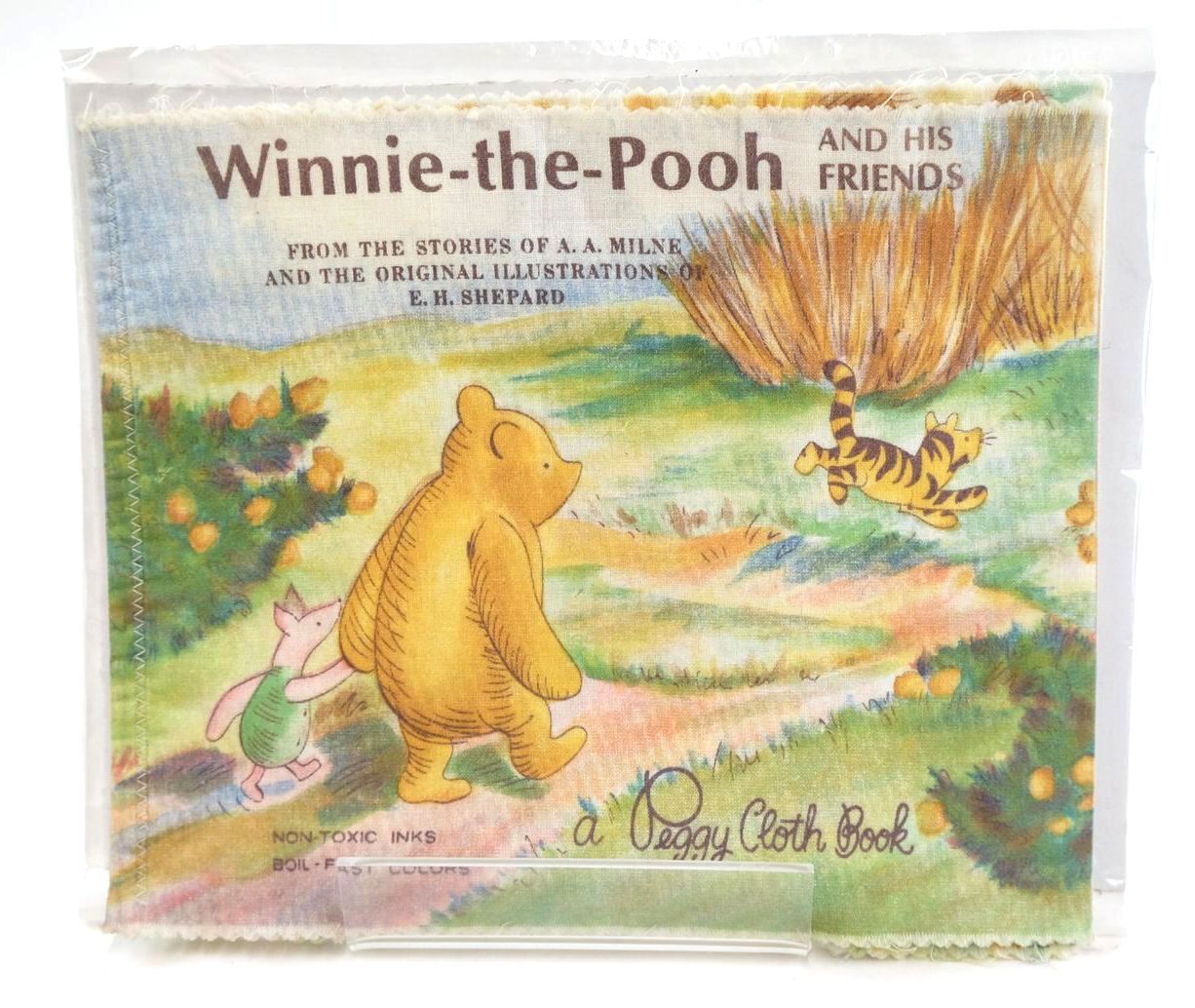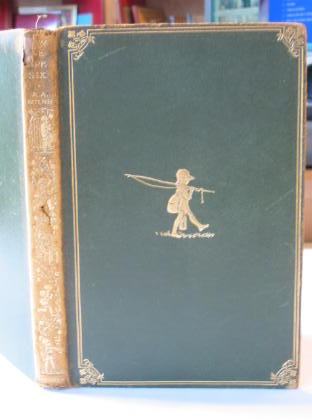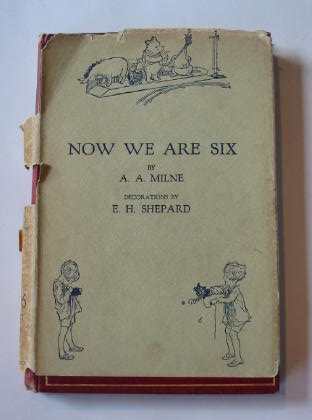Now We Are Six by A.A. Milne
‘Now We Are Six’ was first published in 1927 and is the third title in the Pooh bear quartet, after 'When We Were Very Young' (1924), 'Winnie-the-Pooh' (1926) and before 'The House At Pooh Corner' (1928). It is the second in the series that is a collection of poetry and rhymes for children and contains a total of 35 different poems – some more well-known than others. Perhaps this is partly why some say that this is their least favourite book of the four.
Many of the verses feature Christopher Robin, but only two (that I could see) feature the much-loved Winnie-the-Pooh, specifically, 'Us Two' and 'The Friend'. He does, however, keep popping up in the E.H. Shepard illustrations that accompany eleven of the poems. This is explained by Milne in the postscript of the introduction where he writes:
‘PS - Pooh wants us to say that he thought it was a different book; and he hopes you won't mind, but he walked through it one day, looking for his friend Piglet, and sat down on some of the pages by mistake.’
'The Engineer' also features illustrations of Pooh, along with Piglet, Kanga, Roo and Eeyore (no Tigger – as he didn't appear until ‘The House At Pooh Corner’). In this verse, Christopher Robin along with his 100 Acre Wood friends appear to be upstairs in the nursery, as it's raining outside, but that won't stop their fun:
‘Let it rain!
Who Cares?
I've a train
Upstairs....’
‘Binker’ is probably another verse many can relate to – he is a ‘secret’, or an imaginary friend, ‘who is always there’. In some ways, maybe this could be seen as quite sad; is it loneliness that has created 'Binker' or is it just for fun? Binker is a perfect friend who can always be relied on and a great way of getting double chocolate treats - ‘as his teeth are rather new’!
One of my favourite poems from ‘Now We Are Six’ has to be ‘Sneezles’. This has always made me giggle, probably because I've always found it to be a tongue-twister, but also for the words made up so that the rhyme fits:
‘...They expounded the reazles
For sneezles
And Wheezles,
The manner of measles
When new,
They said “If he freezles
In draughts and in breezles,
Then PHTHEEZLES
May even ensue.”
In the same year as the first edition of this book (1927), ‘Songs From Now We Are Six’, was also published. It featured ten of the verses set to music by H. Fraser-Simson, along with black and white illustrations by E.H. Shepard. The poems set to music in this book are:
Down By The Pond
Sneezles
The Engineer
The Friend
Furry Bear
The Emperor's Rhyme
Cherry Stones
Wind on the Hill
Twice Times and
Cradle Song
It is reported that, later, the singer Mimi Crawford sang some of these songs which were made available on an old-style record.
Looking at the verses throughout the book, they do vary in length, subject and humour. Milne again seems to address this in his introduction, where he attempts to explain, seemingly as if he was a six-year-old:
‘We have been nearly three years writing this book. We began it when we were very young.....and now we are six. So, of course, bits of it seem rather babyish to us, almost as if they had slipped out of some other book by mistake.......So we want you to know that the name of the book doesn't mean that this is us being six all the time...’
Were some verses rejected for ‘When We Were Very Young’ and later included in ‘Now We Are Six’? I don't know. Perhaps there were just too many to choose from. Of course, Christopher Robin Milne, for whom they were written would have changed a great deal, as children do, in the three years over which they were composed.
The book concludes, quite rightly with the poem 'The End' which I think is probably one of the best known from the collection:
‘When I was One,
I had just begun.
When I was Two,
I was nearly new.
When I was Three,
I was hardly me.
When I was Four,
I was not much more.
When I was Five,
I was just alive.
But now I am Six, I'm as clever as clever.
So I think I'll be six now and for ever and ever’.
Credits:
Wikipedia
lostinagoodbk.com
'Now We Are Six' Facsimile edition, first published in 1999 by Methuen Children's Books.
Contributed by Joanne Hill
(Published on 14th Apr 2023)


